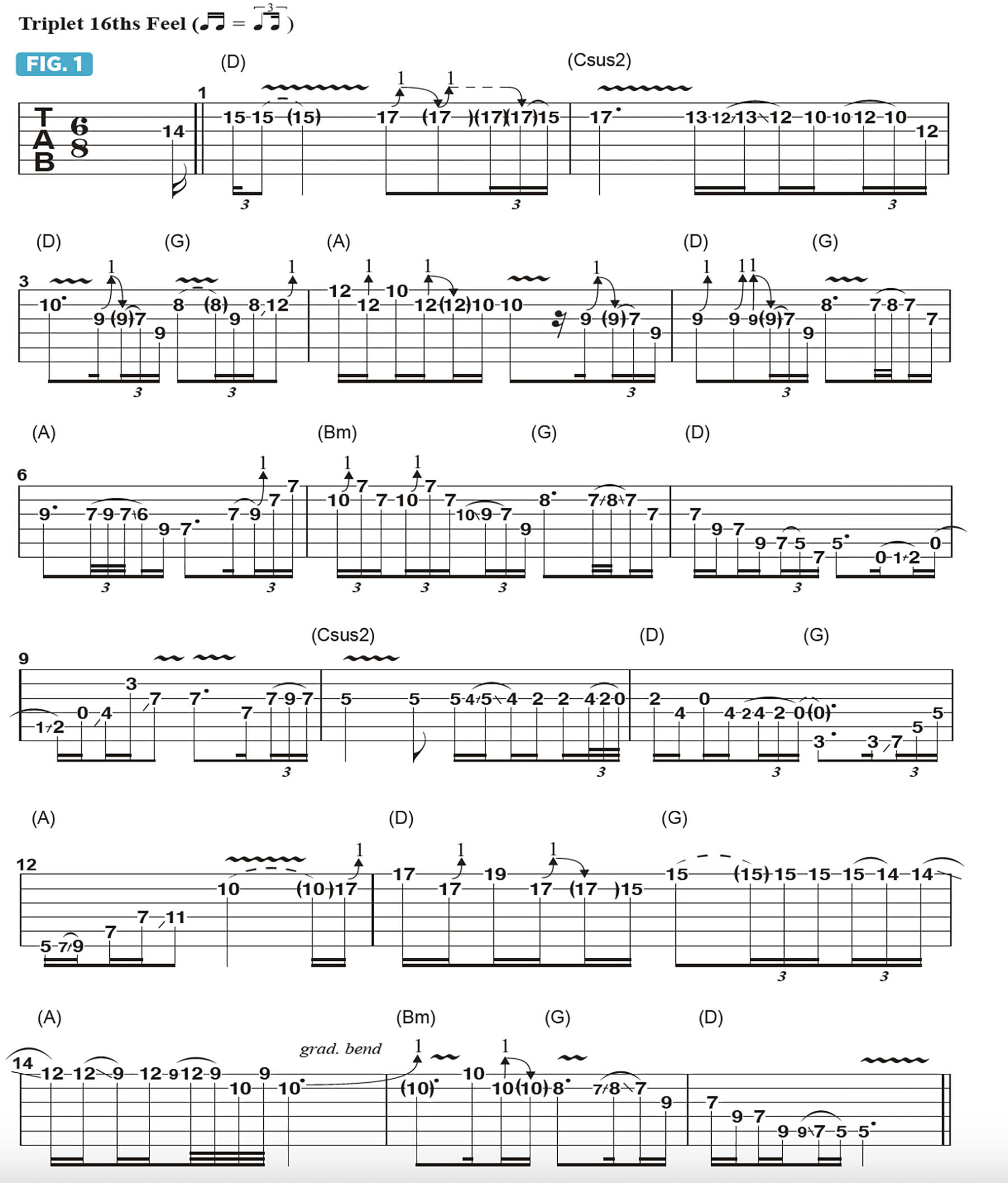The guitar greats describe a good solo as a “song within a song” – here’s how to make it happen and craft a solo that makes a statement
In his final In Deep column, the great Andy Aledort teaches us how lead guitar can maintain a compelling conversation over changing chords
Using the song Hymn, from my new album In a Dream, I’d like to offer the guitar solo as an example of how to effectively craft a solo to closely follow and acknowledge the chord changes.
Figure 1 presents the first solo in Hymn, which is 16 bars long. The song is played in 68 meter, which is essentially two beats per bar with each beat subdivided into three evenly spaced eighth notes, or triplets.
My goal with this solo was to be as melodic as possible, adhering to the “song within a song” concept. It’s played over the tune’s verse (or “A”) section and is an eight-bar form played twice. Each chord in the progression is acknowledged in the solo melody with a corresponding chord tone.
I begin in bar 1 with a phrase built from the D major pentatonic scale (D, E, F#, A, B), highlighting the D chord’s root and major 3rd, F#. Bar 2 is played over Csus2, and here I target the chord’s major 3rd, E, and C root. On beat 2, I anticipate the return to the D chord with a line based on the D Mixolydian mode (D, E, F#, G, A, B, C). FIGURE 2 offers a closer look at this two-bar phrase.
In bar 3, a beat of D is followed by a beat of G. Over the D chord, the melody is based on D major pentatonic, and over G, it's based on G major pentatonic (G, A, B, D, E). Bar 4 moves to the V (five) chord, A, and here I play a line based on the six-note A major hexatonic scale (A, B, C#, D, E, F#).
Like bars 3 and 4, bars 5 and 6 move from D to G to A, but here I use D major hexatonic (D, E, F#, G, A, B) over the D and G chords, switching to A major hexatonic over A. Bar 7 moves from the vi (six minor) chord, Bm, to the IV (four), G. Over Bm, I play notes from the B minor pentatonic scale (B, D, E, F#, A), which is made up of the same notes as D major pentatonic. I then wrap up the first eight bar section of the solo with a return to D major hexatonic.
The end of bar 8 sets up the beginning of the second pass through the eight-bar progression. Here I switch to my guitar’s bridge pickup and play a series of low-note figures based on D major pentatonic, including the “lower neighbor” passing tones of F to F# and Bb to B. These are each articulated as a hammer-on into an ascending finger slide. The remainder of the solo follows the same scale applications applied in bars 1-8.
All the latest guitar news, interviews, lessons, reviews, deals and more, direct to your inbox!
This is the last edition of my In Deep column for the time being, as GW will be bringing in a cast of new columnists. I’d like to thank everyone who has been following the column all of these years. You can find many of my instructional videos on my website, Andy Aledort and on my YouTube channel.
Guitar World Associate Editor Andy Aledort is recognized worldwide for his vast contributions to guitar instruction, via his many best-selling instructional DVDs, transcription books and online lessons. Andy is a regular contributor to Guitar World and Truefire, and has toured with Dickey Betts of the Allman Brothers, as well as participating in several Jimi Hendrix Tribute Tours.



